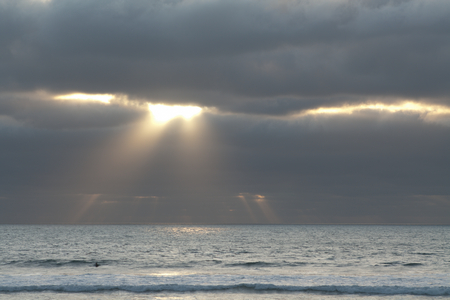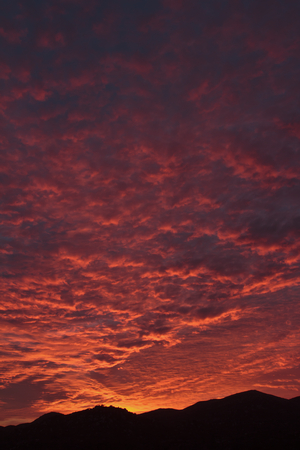 “It doesn’t matter how long we may have been stuck in a sense of our limitations. If we go into a darkened room and turn on the light, it doesn’t matter if the room has been dark for a day, a week, or ten thousand years — we turn on the light and it is illuminated. Once we control our capacity for love and happiness, the light has been turned on.” – Sharon Salzberg
“It doesn’t matter how long we may have been stuck in a sense of our limitations. If we go into a darkened room and turn on the light, it doesn’t matter if the room has been dark for a day, a week, or ten thousand years — we turn on the light and it is illuminated. Once we control our capacity for love and happiness, the light has been turned on.” – Sharon Salzberg
Recommended blog site: Accepting the risk that no one will come back to read the remainder of this post, I highly recommend basilbloginc.wordpress.com. Basil is on safari and has dramatic photos and captivating narratives (zebras, giraffes, and migrating wildebeests).
My last post concerned two exposure adjustments (increasing illumination detail in the shadows and color detail in the highlights) which require processing in editing software. This post is for the many photographers who do not process their images with a computer.
Modern auto exposure (AE) systems are amazingly accurate throughout a wide range of lighting conditions. However, there are situations that are beyond their ability. Here, I will describe how to adjust for lighting conditions with which auto exposure systems have problems.
Correct exposure is crucially important because most digital sensors are capable of capturing only 5-6 stops of illumination in any one frame. The majority of cameras have only the 5 stop range which is a difference of 32 times as much light in the shadows as in the highlights. Therefore, if the highlights are more than 32 times brighter than the darkest shadows, then either the highlights will be blown out (completely white) or the shadows will be completely black. For comparison, with both midday sunlight and dark shadows within a scene, the highlights are thousands of times brighter than the darkest shadows.
Auto exposure limitations: Most photographs are made up of predominantly middle tones with some highlights and some shadows. To accommodate this, auto exposure (AE) systems attempt to get as much of the scene as possible to be mid-tone (specifically 18% gray). Usually this works out fine. However, predominantly bright or predominantly dark scenes are not properly exposed. If your scene is mostly bright, auto exposure will exposure your scene to be middle gray. Thus a landscape of direct sun on fresh snow will have gray snow. If the scene is overall dark, auto exposure will produce an image lightened to middle gray. A black bear in a thick forest at dusk will be gray. (These examples assume that the camera’s auto exposure is set to assess all of its different auto exposure areas within the frame, called evaluative auto exposure).
Assisting the auto exposure system: To get correct exposure of these predominantly bright or dark scenes, you can tell your camera (before taking the shot) that you want the image of the snowy scene to be brighter than usual. This is done by adjusting the exposure compensation. (Most cameras have a button on the back or top that allows easy access to the exposure compensation function, usually marked “+/-“).
To get proper exposure of a bright scene, set exposure compensation to a positive (+) number. For a somewhat bright scene, such as direct sunlight on a light color dog in front of beige fence, start with exposure compensation +1/3 to +2/3 and adjust from there if needed. For direct sunlight on sand, start with exposure compensation set at +1, and then adjusts if needed. For direct sun on fresh snow, set exposure compensation to +1 and 1/2 to +2.
Conversely, for dark scenes, indicate to your camera that you want a darker than average image, by setting exposure compensation to a negative (-) number. For a black dog in front of a dark green fence in shadow, start with exposure compensation of -1/3 to -2/3. For the deep red of the sky 15 minutes after sunset, try exposure compensation of -1. For a black bear in shadow in a thick forest start with exposure compensation of -1 and 1/2.
Trouble shooting auto exposure – Basics. If you are following the above procedure and still get incorrect exposure, first check the basics.
- Is auto exposure turned on?
- Is it set to assess the area of the frame that you are interested in? (It may not have been reset after a recent adjustment)
- Is exposure compensation telling your camera to vary from its usual exposure calculation? (Again, it may not have been reset after you last adjusted it.
- Is auto exposure lock enabled, blocking the camera from assessing exposure independently for each frame?
- Is some option turned on that overrides exposure compensation, flash compensation or manual exposure settings? For example, the Canon Rebel T2i has a feature that automatically corrects brightness and contrast for jpg images (Auto Lighting Optimizer). Its default setting is “On” (“Standard”). This option may partially override your exposure compensation and manual exposure settings when they are set to produce a darker image. This could produce a brighter image than you are expecting. (It affects only jpg, not raw, images.) This is a helpful feature for people who never adjust exposure downward themselves. However, I recommend disabling this feature if you do. However, for people who adjust exposure compensation themselves, I recommend disabling this feature for standard shooting. Enable it just when appropriate. 5) Do you have viewfinder light leak? This applies only to DSLR’s. This type of camera has a mirror which, in its normal position, prevents light that comes into the camera through the viewfinder from reaching the sensor. However, just before the shutter opens, the mirror pops up and away from the sensor. With the mirror up, any light entering your viewfinder will provide the sensor with more light than was predicted based on “through the lens” illumination. . This can be a problem whenever bright light falls upon the viewfinder, but particularly when direct sunlight is on the viewfinder. The greatest change/error is exposure occurs when initial exposure was determined while the eye was blocking much of the light from reaching the sensor, but when the photographer moves back just prior to the shot, allowing direct sunlight to fall upon the viewfinder. Before dismissing this as arcane and insignificant, consider that Canon DSLR’s come with a viewfinder cover attached to the shoulder strap (It’s easy to overlook this small black rectangular cover).
When only the main subject needs to be properly exposed: The examples discussed above assume that you have the auto exposure system set to assess all of its possible auto exposure areas within the frame (full evaluative metering). However, there are occasions when the lighting varies so much that not all of the frame can be properly exposed. Thus we choose our main area/subject of interest to be well exposed and let the remainder of the frame go over/under exposed (such as when you take a photo of a groom in a blue tux that is standing in front of a bright white canopy).
When only a portion of the frame can be properly exposed, there are three common options offered by most cameras: partial, center-weighted and spot metering. Partial metering determines exposure based solely only the central area of the frame. Use this when you want correct exposure for a fairly large subject (without caring whether the background turns out very bright or dark (For example, you may want your light brown dog to be properly exposed, regardless of whether the background is very bright or dark) . If your subject is not in the center of the frame, point the center of the frame at your subject and press the shutter button half way down. This establishes exposure appropriate for your subject. While still holding the button half way down, recompose the image, then shoot. Many cameras have, in addition, a button that will keep the auto exposure unchanged while you recompose. This (auto exposure {AE} lock button) is usually located on the camera back (may be marked with an asterisk). When this is pressed, the current exposure settings are locked in until the shutter button is pressed. Thus, the shutter release button does not need to continuously held half way down to keep the exposure compensation from changing settings. This is particularly useful for tripod work. In some cameras, AE lock applies only to this one frame. In other cameras, its effect carries over to subsequent frames until it is turned off (With this “carryover type”, don’t forget to turn it off when finished).
Center weighted auto exposure metering: A second way to limit the amount of the frame that auto exposure assesses, is called center weighted metering. In this case, exposure is calculated by giving the central area of the frame priority. However, instead of ignoring the remainder of the frame as with partial metering, the remainder of the frame is changed by a smaller amount than is the center. This would be useful when you are primarily interested in properly exposing a central subject, but do not want the background to be way too bright or dark. An example would be a flower photo with a main subject and additional flowers within a bright background. You do not want the background flowers to be blown out (grossly overexposed). Center weighted exposure is a good choice here.
Spot metering: This determines exposure based exclusively on a smaller central portion of the frame than is utilized by either partial or center weighted metering. This is great for a main subject that occupies only a small portion of the frame. For example, let’s say you are at the zoo, ready to photograph a leopard that is 20 feet away from you. If you spot meter with the very center of the frame on the leopard, it will be properly exposed regardless of whether the background is bright or dark.
I hope this will be helpful to someone. I welcome comments, criticism and suggestions for future blog topics.
I am available at NaturePhotoRehab.com to assist clients in transforming their nature photos into impressive works of art that they are proud to give as gifts or to hang on their own wall for inspiration.
©2012 J. Michael Harroun NaturePhotoRehab.com











